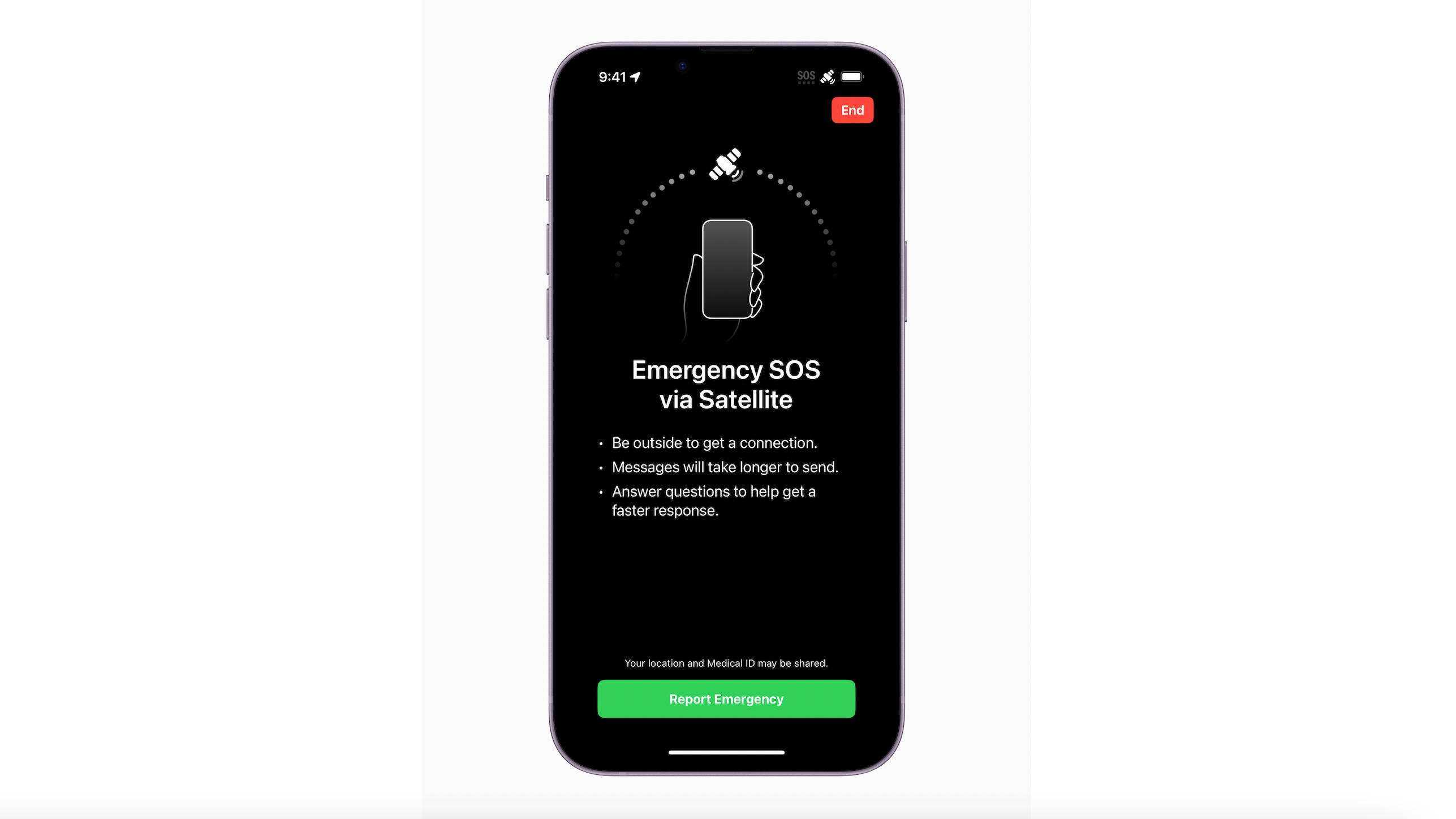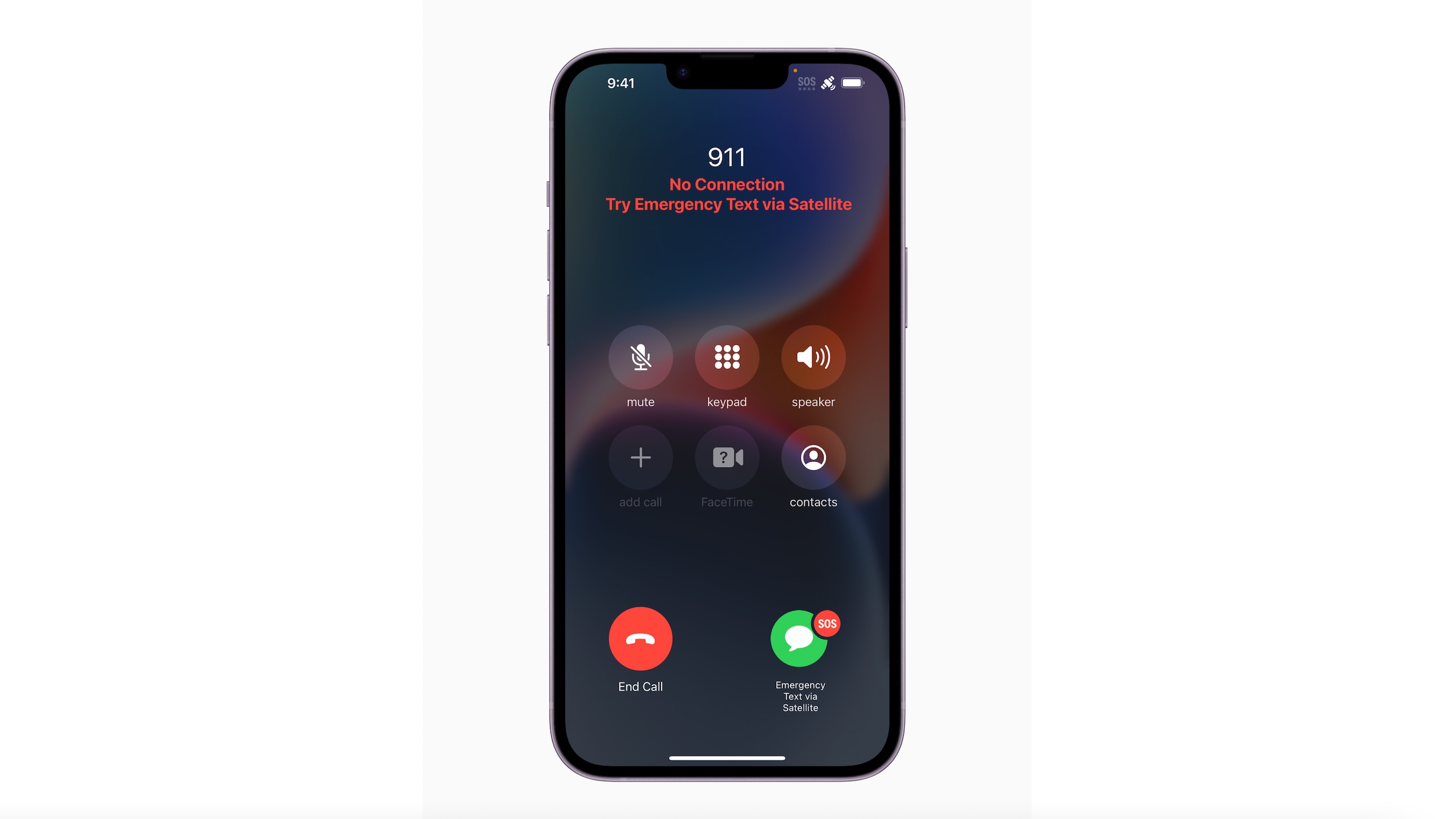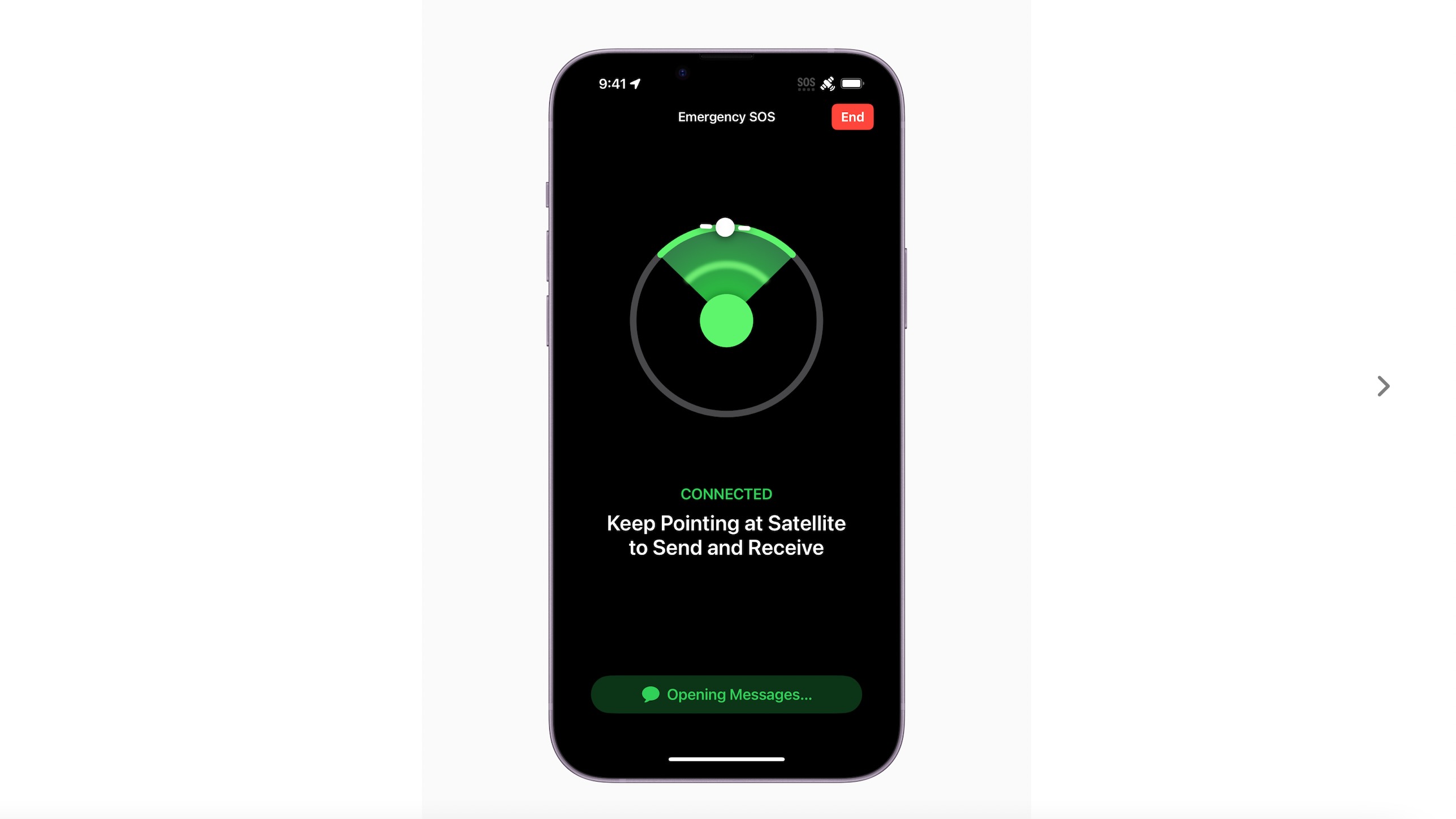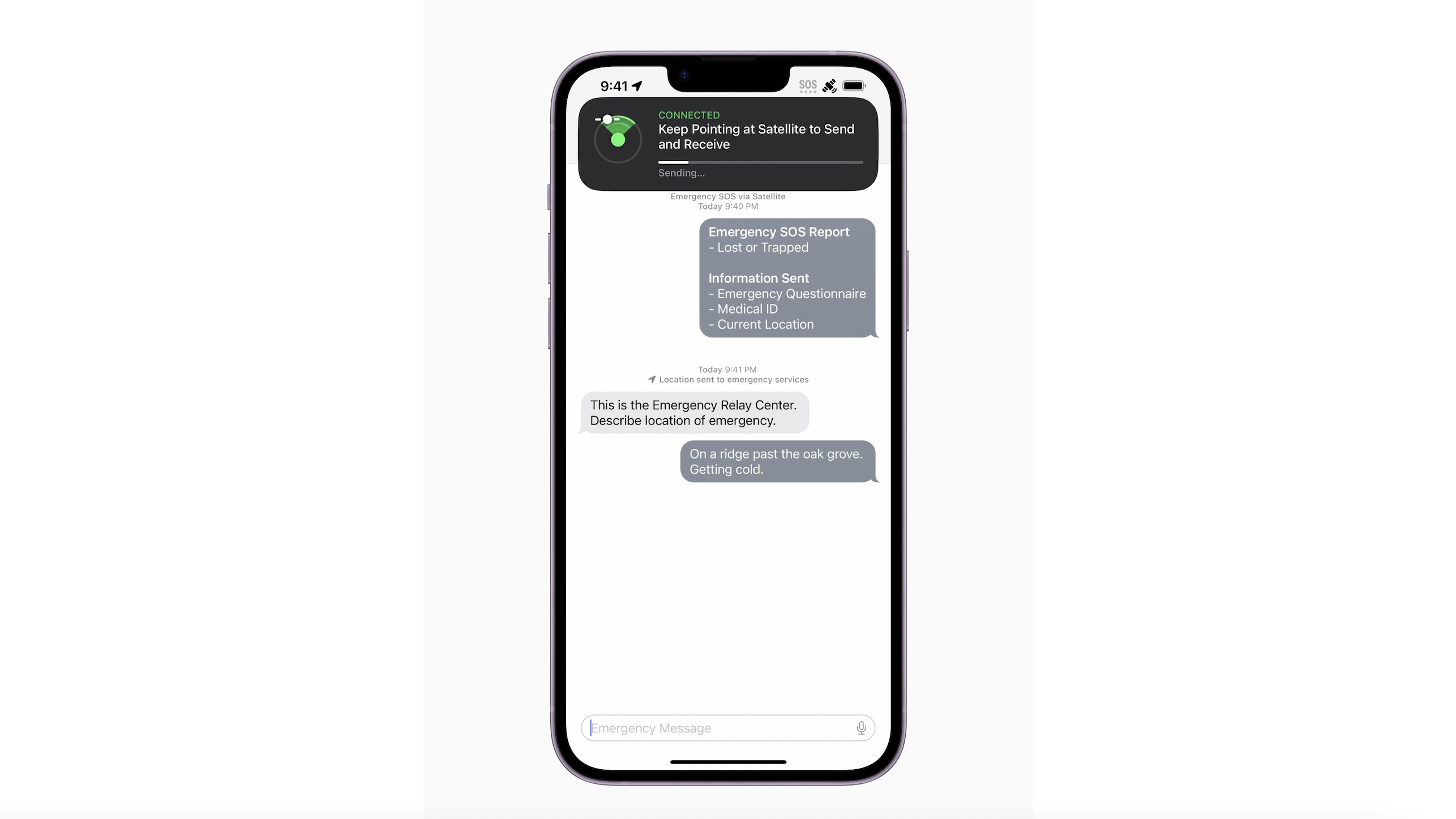Apple launches Emergency SOS via satellite on iPhone 14
The service is now available in the US and Canada and will extend to France, Germany, Ireland, and the UK in December

Apple has announced its new safety service; Emergency SOS via satellite, which is now available to iPhone 14 customers in the US and Canada. Working on all models in the iPhone 14 line-up, the technology enables users to message the emergency services while outside of cellular and Wi-Fi coverage. The service will come to France, Germany, Ireland, and the UK in December, cementing the iPhone 14 family as the best iPhone device to date.

“Indispensable tool that can get users the help they need while they are off the grid”
Greg Joswiak, Apple
Greg Joswiak, Apple’s senior vice president of Worldwide Marketing, explained that "Emergency SOS via satellite is a breakthrough service available only on the iPhone 14 lineup, and a new innovation that we hope will provide our customers some peace of mind. Some of the most popular places to travel are off the beaten path and simply lack cellular coverage. With Emergency SOS via satellite, the iPhone 14 lineup provides an indispensable tool that can get users the help they need while they are off the grid.
“Our teams worked tirelessly to tackle a new set of technical challenges to bring this service to life, in addition to building a reliable on-the-ground infrastructure."
How Emergency SOS via satellite works
All iPhone 14 models, including the iPhone 14 Pro can connect directly to a satellite through a combination of components and integrated software – Emergency SOS via satellite builds on existing iPhone features including Emergency SOS, Medical ID, emergency contacts, and Find My location sharing, allowing all iPhone 14 models to connect directly to a satellite through a combination of components and integrated software.
The new feature allows Public Safety Answering Points (PSAPs), or emergency services call centers, to connect to users in emergency situations, and requires no additional software at their end. Those using the service will be connected directly to emergency services that are equipped to receive text messages or to relay centers with Apple-trained emergency specialists who will contact on users' behalf when text messages can’t be received.
“Important breakthrough that will save lives”
Mark Ghilarducci
“Providing Emergency SOS via satellite is an important breakthrough that will save lives. The critical work being done by Apple to create innovative new solutions to support 911 providers and first responders is a huge step forward in protecting Californians and the broader public during an emergency situation,” said Mark Ghilarducci, the California Governor’s Office of Emergency Services director.
In order to make Emergency SOS via satellite a reality, Apple designed and built custom components and software that allow iPhone 14 devices to connect to a satellite’s unique frequencies without a bulky antenna. “A text compression algorithm was also developed to reduce the average size of messages by 300 percent, making the experience as fast as possible. With Emergency SOS via satellite, users can send and receive messages in as little as 15 seconds in clear conditions,” explains Apple in a press release.
Get the Digital Camera World Newsletter
The best camera deals, reviews, product advice, and unmissable photography news, direct to your inbox!
This is impressive because satellites are located thousands of miles away from Earth, move rapidly, and have low bandwidth, it can take a few minutes for messages to be received.
How to use Emergency SOS via Satellite

iPhone 14 users who need to call emergency services but have no cellular coverage or Wi-Fi coverage available will be able to use Emergency SOS via satellite. An interface will appear on the iPhone with a short questionnaire to help the user answer vital questions with a few simple taps. This information is transmitted to dispatchers in the initial message, so they can quickly get an insight into a user’s situation and location.
Following the on-screen questionnaire, Emergency SOS via Satellite guides the user needing help as to where to point their iPhone in order to connect to the satellite and then sends the initial message.
This initial message includes the user’s questionnaire responses; location, including altitude; iPhone battery level; and where enabled Medical ID. The questionnaire and follow-up messages are relayed directly via satellite to dispatchers or relay centers where Apple‑trained specialists will call for help on the user’s behalf.
The transcript can also be shared with the user’s emergency contacts to keep them informed - up to 10 emergency contacts using iOS 16.1 and iMessage will see the user’s location, type of emergency, and a live transcript of their conversation with emergency services. If emergency contacts aren’t on an Apple iPhone or are on an iPhone not using iOS 16.1 or iMessage, they will see the user’s location and type of emergency only. Service users can stop sharing their information with an emergency contact at any point.
Handily, iPhone 14 users will be able to familiarize themselves with the service, using the built-in Emergency SOS via satellite demo. This demo allows users to test satellite connectivity on their iPhone by connecting to a real satellite in range, but without calling emergency services.
Another great feature, but not related to emergency situations, is that the new service also allows users traveling off-grid to tell friends and family of their whereabouts by opening the Find My app and sharing their location via satellite.

What Emergency SOS via Satellite doesn't do
It’s important to note that while we think the new feature is brilliant and will save many lives, it does not make the iPhone 14 a satellite phone – satellite phones allow you to place a call (rather than a message) when you are far away from ordinary phone coverage – be that just in the wilderness with no coverage or out at sea.
Another important consideration if choosing between a satellite phone or an iPhone 14 because of this feature, is that users will need a clear view of the sky and a clear horizon to use Emergency SOS via satellite – so there’s nothing blocking the satellite signal. “In ideal conditions with a direct view of the sky and the horizon, a message might take 15 seconds to send, and over a minute to send under trees with light or medium foliage. If you're under heavy foliage or surrounded by other obstructions, you might not be able to connect to a satellite,” Apple has stated previously.
Want to know the latest speculations when it comes to camera phones? Check out our phone rumorshub, which is updated regularly as new intel comes in.
These are the best camera phones and best budget camera phones if you're on the lookout for a new device.
Rachael is a British journalist with 18 years experience in the publishing industry. Since working on www.digitalcameraworld.com, she’s been freelancing, and contributing to some of the world’s best-loved websites and magazines including T3.com and TechRadar.com and has also had a book, iPad for Photographers, published. She's currently acting as editor of 5GRadar.com - a website specializing in the latest cellular technology.

